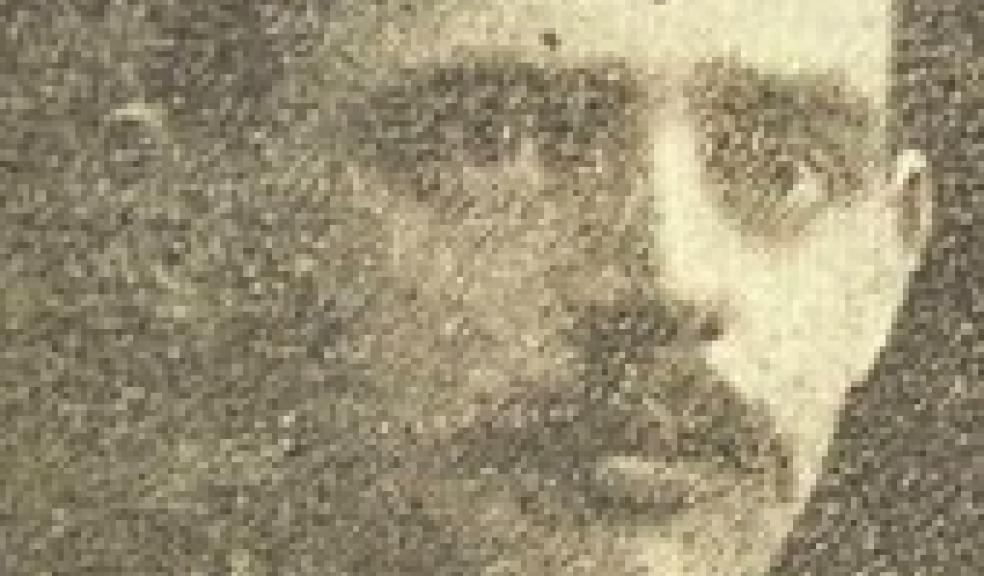
Plymouth residents asked to commemorate HMS Vanguard centenary with new community project
The Commonwealth War Graves Commission (CWGC) is encouraging people to start taking part in its new initiative by remembering the 74 men commemorated on the CWGC naval memorial, who lost their lives a century ago on HMS Vanguard.
The Commission’s ‘For those in Peril’ project, is encouraging Plymouth residents to research the names on the CWGC Plymouth Navy Memorial and share their findings; starting with the 74 men from HMS Vanguard, who have no known grave but the sea.
On July 9, 1917, shortly before midnight, HMS Vanguard suffered a series of magazine explosions in Scapa Flow in the Orkney Islands. She sank almost instantly, with only two of her 837 crew surviving.
One of the casualties commemorated by name on the CWGC Plymouth Naval Memorial is Royal Navy Telephonist, Henry James Maddock from Nottingham (picture attached and his letter home).
He was only 18 years old when the HMS Vanguard exploded and his body was never recovered. He was the son of William Henry and Sarah Ann Maddock, of Birkland Avenue, Mapperley, Nottingham.
Another was Able Seaman, Enoch Barton, aged 29 (photo attached). He was the son of William and Eleanor Barton, of Padiham Road, Bunrley, Lancashire.
The youngest casualty of the disaster was 16-year-old, Boy 1st Class, Albert Edward Mauger.
He was the son of Albert Edward and Jane Mauger from St. Brelade, Jersey, and his Notice of Death appeared in the Jersey Evening Post on Monday, July 16, 1917. It read:
‘Roll of Honour. Among those who have laid down their lives for King and Country is Albert (Bertie) Mauger, who though but 16 years of age, formed part of the crew of HMS Vanguard. He was the grandson of Mr A Mauger and nephew of Mr A Tudor of Bulwark Cottage, St. Aubins.
‘He was formerly a porter at Millbrook Station and he left the Island to join the navy some 12 months ago. The lad was exceedingly popular and will be greatly mourned by all who knew him.’
The eldest was 43-year-old Petty Officer 1st Class, William Benjamin Peters, who was the husband of Florence Elizabeth Peters, of Goschen St, Keyham, Barton, Devonport.
There are 7,251 names of sailors from the First World War and 15,933 names from the Second World War on the monument.
For those interested in finding out more about the people commemorated from the First World War, a free resource pack can be requested, detailing the history of the memorial, with helpful tips on how to research and share findings.
To register to take part and receive your resource pack, please email community@cwgc.org
Jennie Sweeney, Head of Community Engagement for the Commonwealth War Graves Commission, said: “This is a really exciting opportunity for those in Plymouth to find out more about the beautiful CWGC Plymouth Naval Memorial, and work with us to discover and share the stories of the individuals it commemorates, from across the UK and across the world.
“We encourage community groups and individuals to help us research those who lost their lives at sea during WWI and start to get a sense of the person behind the name on the memorial.
“I’d encourage anyone interested to register for a free resource pack and see how your school, community organisation or family can take part.”
After the disaster of HMS Vanguard, only 17 of the 22 men recovered from the sea after the explosion were buried at Lyness Royal Naval Cemetery, Scotland.
The remaining casualties are commemorated on the Naval War Memorials at Chatham (621), Portsmouth (125) and Plymouth (74).
The Board of Inquiry, which heard accounts of the incident from many witnesses, concluded that the explosion took place in the central part of the ship, but were unable to find the exact cause of the explosion.
Several theories were made but the final conclusion of the Board was that a fire probably started in one of the ammunition magazines, perhaps when a raised temperature caused spontaneous ignition of cordite, spreading to one of the ship’s main ammunition magazines which then exploded.
After the Second World War, it was decided the CWGC naval memorials should be extended to provide space for commemorating the naval dead, but since the three sites were dissimilar, a different architectural treatment was required for each.
The architect for the Second World War extension at Plymouth was Sir Edward Maufe (who also designed the Air Forces memorial at Runnymede in Surrey) and the additional sculpture was by Charles Wheeler and William McMillan.
The Extension was unveiled by HRH Princess Margaret on May 20, 1954.
A further unveiling took place on November 11, 1956, when panels honouring those who died on shore, but who had no known grave, were unveiled by Admiral Sir Mark Pizey.
In addition to commemorating seamen of the Royal Navy who sailed from Plymouth, the First World War panels also bear the names of sailors from Australia and South Africa.













